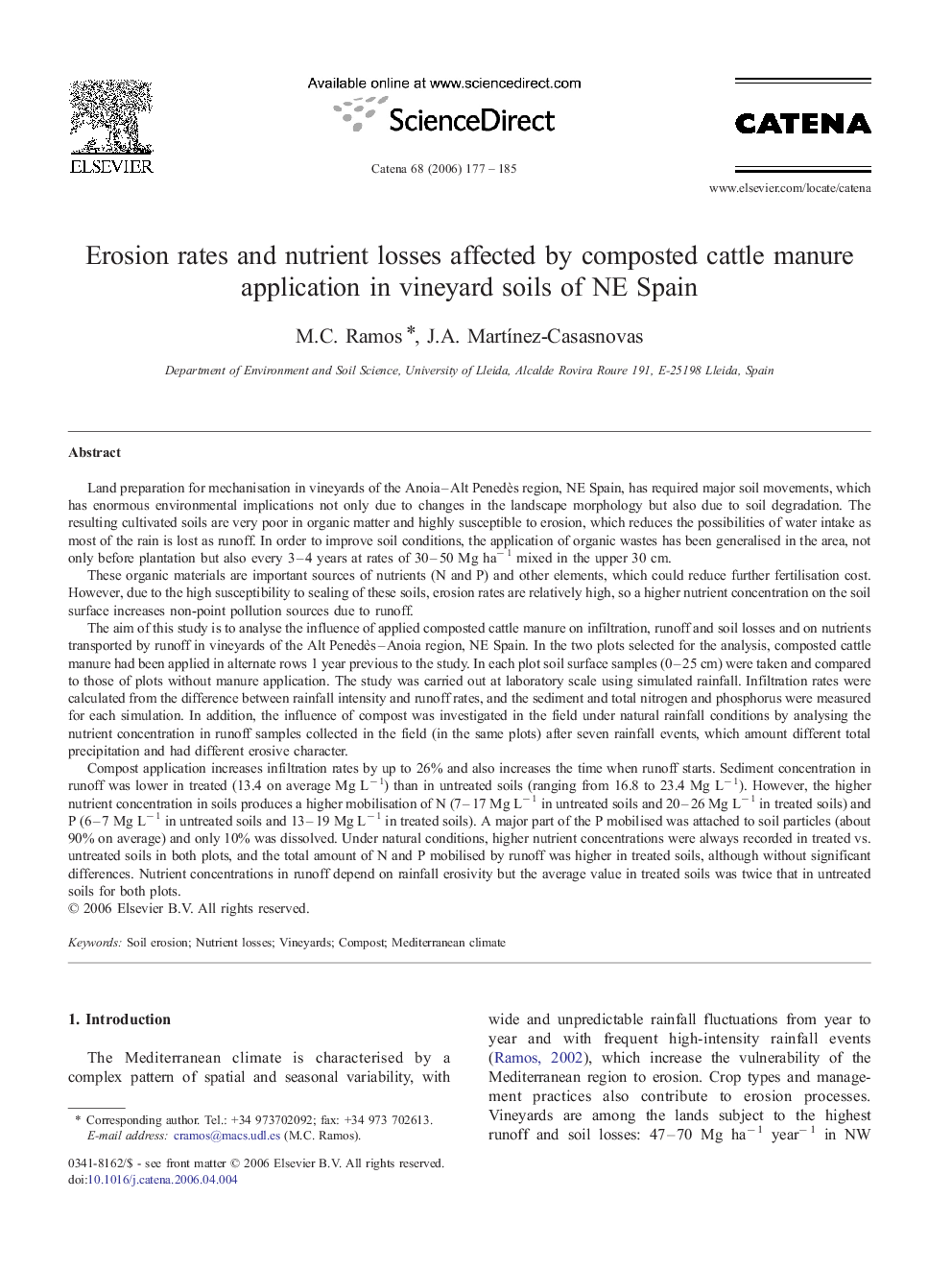| کد مقاله | کد نشریه | سال انتشار | مقاله انگلیسی | نسخه تمام متن |
|---|---|---|---|---|
| 4572668 | 1629267 | 2006 | 9 صفحه PDF | دانلود رایگان |

Land preparation for mechanisation in vineyards of the Anoia–Alt Penedès region, NE Spain, has required major soil movements, which has enormous environmental implications not only due to changes in the landscape morphology but also due to soil degradation. The resulting cultivated soils are very poor in organic matter and highly susceptible to erosion, which reduces the possibilities of water intake as most of the rain is lost as runoff. In order to improve soil conditions, the application of organic wastes has been generalised in the area, not only before plantation but also every 3–4 years at rates of 30–50 Mg ha− 1 mixed in the upper 30 cm.These organic materials are important sources of nutrients (N and P) and other elements, which could reduce further fertilisation cost. However, due to the high susceptibility to sealing of these soils, erosion rates are relatively high, so a higher nutrient concentration on the soil surface increases non-point pollution sources due to runoff.The aim of this study is to analyse the influence of applied composted cattle manure on infiltration, runoff and soil losses and on nutrients transported by runoff in vineyards of the Alt Penedès–Anoia region, NE Spain. In the two plots selected for the analysis, composted cattle manure had been applied in alternate rows 1 year previous to the study. In each plot soil surface samples (0–25 cm) were taken and compared to those of plots without manure application. The study was carried out at laboratory scale using simulated rainfall. Infiltration rates were calculated from the difference between rainfall intensity and runoff rates, and the sediment and total nitrogen and phosphorus were measured for each simulation. In addition, the influence of compost was investigated in the field under natural rainfall conditions by analysing the nutrient concentration in runoff samples collected in the field (in the same plots) after seven rainfall events, which amount different total precipitation and had different erosive character.Compost application increases infiltration rates by up to 26% and also increases the time when runoff starts. Sediment concentration in runoff was lower in treated (13.4 on average mg L− 1) than in untreated soils (ranging from 16.8 to 23.4 mg L− 1). However, the higher nutrient concentration in soils produces a higher mobilisation of N (7–17 mg L− 1 in untreated soils and 20–26 mg L− 1 in treated soils) and P (6–7 mg L− 1 in untreated soils and 13–19 mg L− 1 in treated soils). A major part of the P mobilised was attached to soil particles (about 90% on average) and only 10% was dissolved. Under natural conditions, higher nutrient concentrations were always recorded in treated vs. untreated soils in both plots, and the total amount of N and P mobilised by runoff was higher in treated soils, although without significant differences. Nutrient concentrations in runoff depend on rainfall erosivity but the average value in treated soils was twice that in untreated soils for both plots.
Journal: CATENA - Volume 68, Issues 2–3, 31 December 2006, Pages 177–185